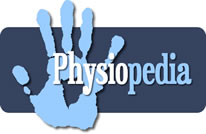Richard Deyo MD, the keynote speaker at the American Academy of Orthopaedic Manual Physical Therapists (AAOMPT) National Conference in October 2008, has again published data indicting the US approach to chronic back pain dramatically increases costs without improved outcomes. Deyo and colleagues reported in the January 2009 issue of the Journal of American Board of Family Practice the following staggering statistics:
- A 629% increase in Medicare expenditures for epidural steroid injections;
- A 423% increase in expenditures for opioids for back pain;
- A 307% increase in the number of lumbar magnetic resonance images among Medicare beneficiaries;
- A 220% increase in spinal fusion surgery rates.
The incidence of chronic and acute Low Back Pain, as documented by office visits, has not changed during the last 12 years. The application of these technologies is not without consequences Deyo et al noted, ‘Innovation has often outpaced clinical science, leaving uncertainty about the efficacy and safety of many common treatments. Complications and even deaths related to pain management are increasing.’ Indeed, the reoperation rates for low back pain have increased, not improved. The authors conclude that the ‘Prescribing yet more imaging, opioids, injections, and operations is not likely to improve outcomes for patients with chronic back pain.’ They note that these approaches often are applying an acute care model to chronic pain and not acknowledging the current evidence that chronic pain requires a different approach and that there are ‘no magic bullets.’ In a “chronic care model” chronic back pain, like diabetes or asthma, ‘is a condition we can treat but rarely cure.’ Deyo et al suggest the solution that ‘chronic back pain may benefit from sustained commitment from health care providers; involvement of patients as partners in their care; education in self-care strategies; coordination of care; and involvement of community resources to promote exercise, provide social support, and facilitate a return to work.’
Tim Flynn, PT, PhD, president of the AAOMPT states, ‘The manual physical therapist is the health care provider uniquely trained to manage individuals with chronic low back pain. We utilize low risk, state-of-the-art care incorporating exercise, manual physical therapy, patient education and the application of the biopsychosocial model in managing this chronic condition. The Academy is dedicated to the application of current models for chronic pain management.’ The recent AAOMPT conference in Seattle focused on current theories and practice of chronic pain management with international experts on pain management.





